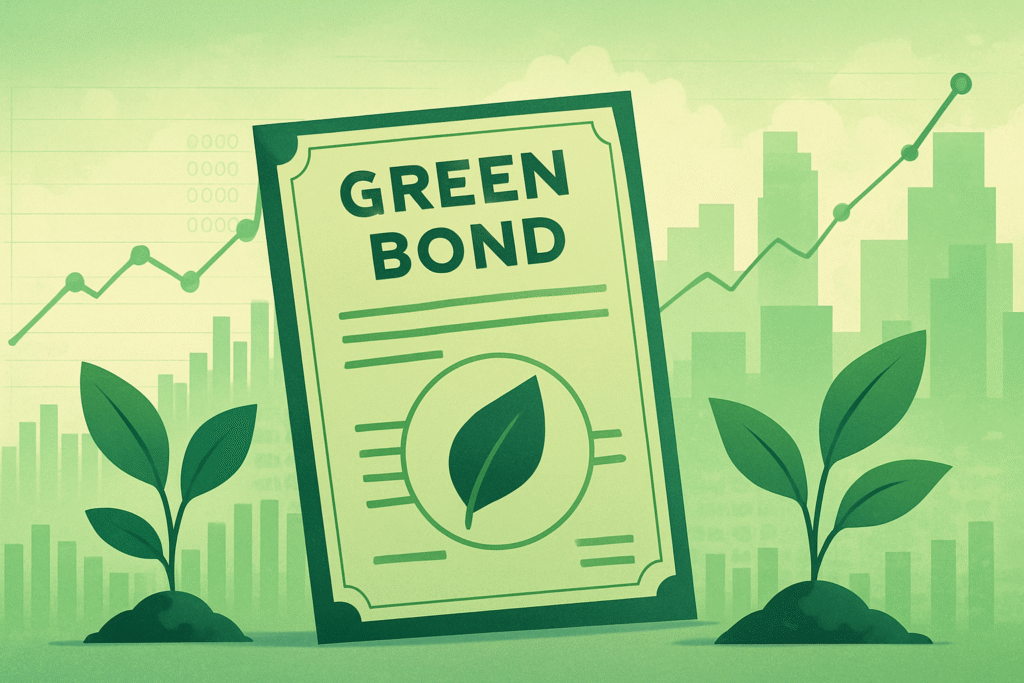How Green Bond Indexes Are Reshaping Global Finance

Sustainable investing is no longer just a trend, it has become a solid strategy in the financial world. In this movement, green bonds have emerged as an alternative for investors who want to align profitability with a positive environmental impact. But as the market evolved, a new tool was created to track the performance of these assets: the Green Bond Indexes.
These indexes help measure the behavior of a basket of bonds aimed exclusively at financing sustainable projects.
They are essential for those who want to understand the green bond market more broadly, with concrete data on return, volatility, and growth.
What are Green Bonds?
Green bonds are debt securities issued by governments, companies, or financial institutions with the specific goal of financing sustainable projects.
This may include clean energy, low-emission public transportation, waste management, or climate-resilient infrastructure.
By purchasing a green bond, the investor is essentially lending money to an environmental cause and earning interest in return.
In recent years, the volume of green bond issuances has grown significantly. This growth is driven by increased awareness of climate change, regulatory pressures, and growing demand for investments that meet ESG (environmental, social, and governance) criteria.
How do Green Bond Indexes work?
Green bond indexes work similarly to traditional financial market indexes, such as the S&P 500 or the Ibovespa.
The difference is that they include only bonds that follow internationally recognized green criteria. This ensures that the tracked investments are truly committed to environmental projects.
Some of the main global examples include the Bloomberg MSCI Green Bond Index and the S&P Green Bond Index.
These indexes assess several factors, such as sector of activity, maturity, and credit rating, but always maintain a focus on the sustainability of the projects being financed.
These indexes are used by fund managers, financial advisors, and institutional investors to monitor the performance of the green market, build ESG-aligned portfolios, and even launch ETFs (exchange-traded funds) focused on sustainability.
Why invest in green bonds and track the indexes?
Investing in green bonds can be financially attractive while contributing to a more sustainable future.
These assets often offer returns similar to traditional bonds, with the added benefit of being tied to projects that reduce carbon emissions, preserve natural resources, or promote clean energy.
However, tracking specific indexes is essential for understanding the dynamics of this market. They help compare the performance of green bonds to other assets, identify regional or sector trends, and make more informed decisions.
Additionally, the indexes bring more transparency to the market, as they require clear criteria for including each bond.
Challenges and precautions when investing
Despite the advantages, it’s important to remember that not all green bonds are the same. There are legitimate concerns about so called “greenwashing,” when an issuer promotes a project as sustainable without it actually delivering significant positive impact.
That’s why many indexes adopt strict methodologies to validate the projects included, requiring certifications or environmental impact reports.
Another point of caution is liquidity. Although the market is expanding, some bonds still show low trading volume, which can make exiting the investment more difficult.
Monitoring the indexes helps identify the best-performing and most liquid assets in the secondary market.
The role of green bond indexes in the future of sustainable investing
As climate urgency increases and regulators impose stricter standards, green bond indexes are expected to become even more prominent.
They not only make it easier for investors to access a more sustainable market but also encourage issuers to follow good environmental practices in order to be eligible for inclusion.
Moreover, green bond indexes play an educational role. By standardizing criteria and publishing performance data, they help the market better understand what it really means to invest sustainably and how this type of investment can generate consistent returns over time.
Conclusion
Green Bond Indexes show that it’s possible to invest with purpose without giving up returns. They represent a new phase in the financial market, where performance and environmental impact go side by side.
For investors who want to make more conscious choices, tracking these indexes is an essential step.
In a world increasingly focused on sustainability, understanding how green bond indexes work and their potential is a way to seize profit opportunities while taking concrete action to preserve the planet.

